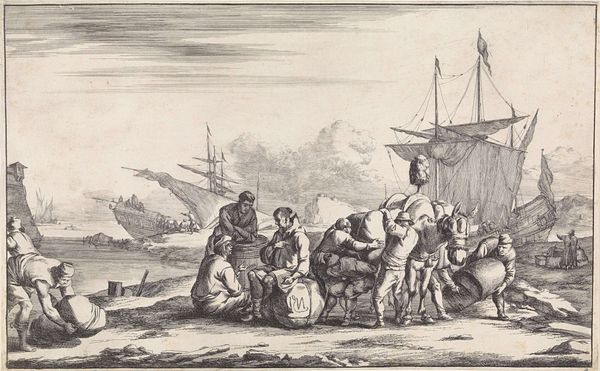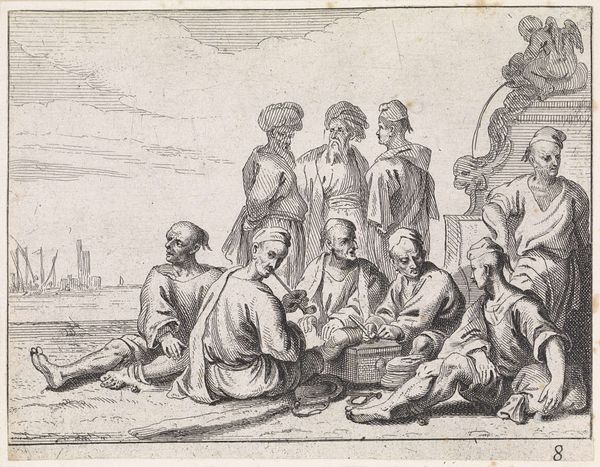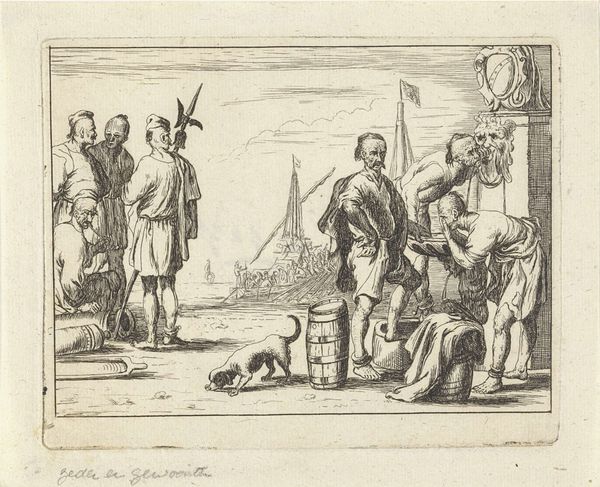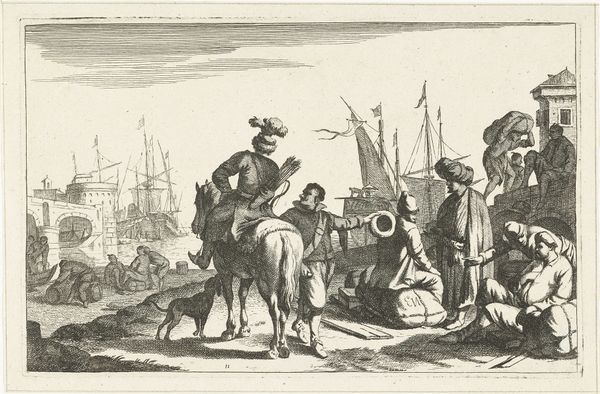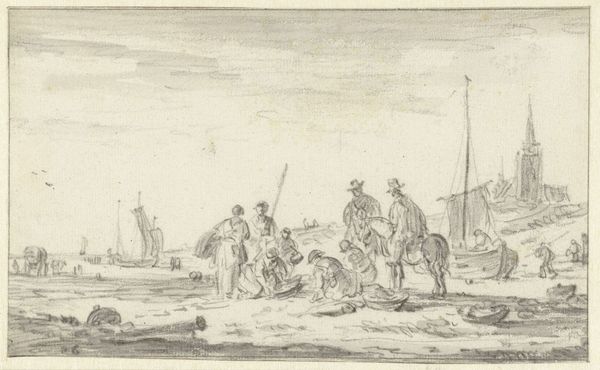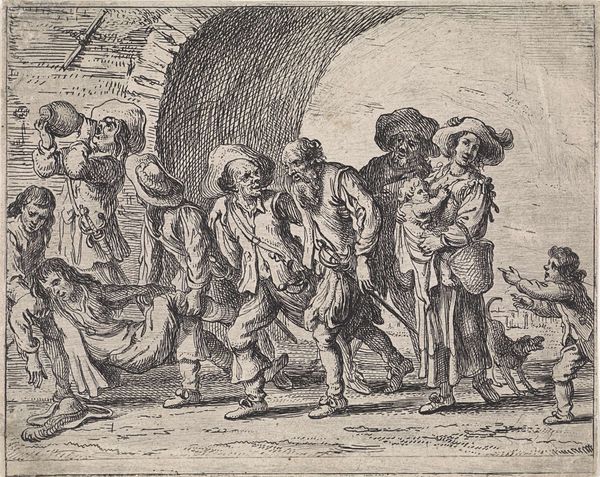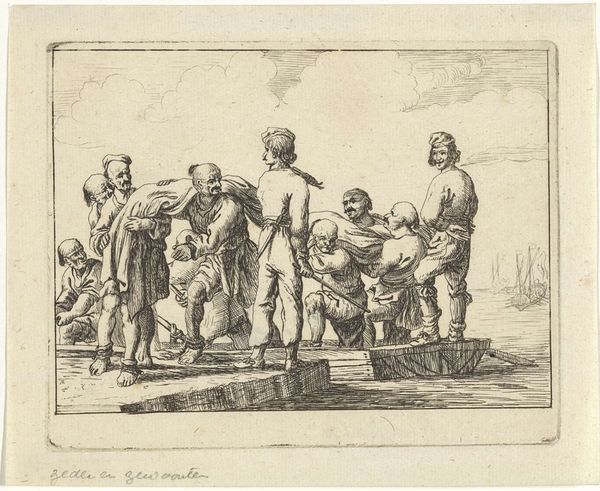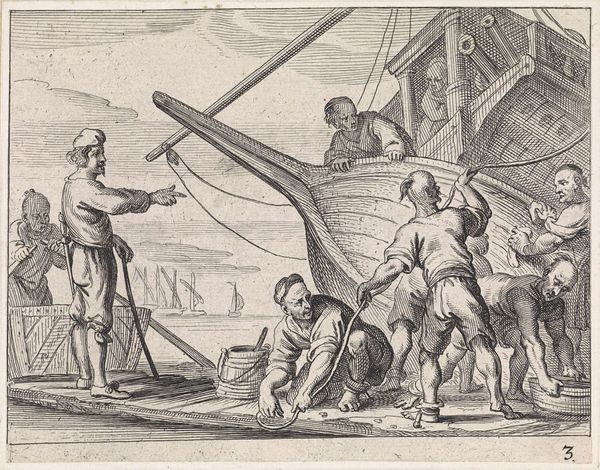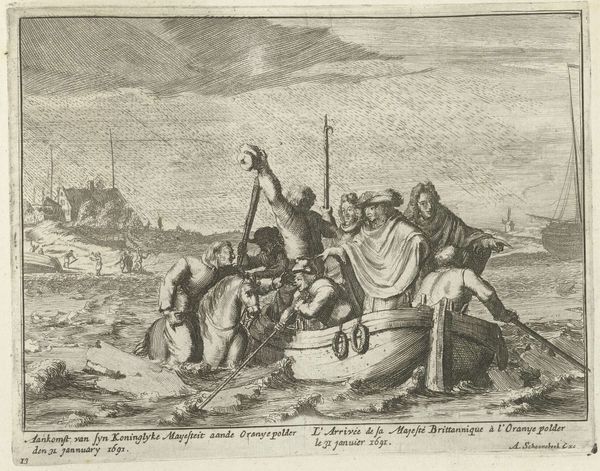
print, engraving
#
portrait
#
narrative-art
#
baroque
# print
#
figuration
#
line
#
cityscape
#
genre-painting
#
history-painting
#
engraving
Dimensions: height 116 mm, width 148 mm
Copyright: Rijks Museum: Open Domain
Curator: This print from 1649, titled "Islamitische galeislaven en zeelieden op een kade" translates to "Islamic Galley Slaves and Sailors on a Quay," and it offers us a window into 17th-century maritime life. The artist, M. Schaep, captures a bustling scene filled with intriguing details rendered through engraving. Editor: Immediately, the image strikes me with its stark composition. The limited tonal range accentuates the figures. The artist presents men interacting, the central group seemingly engaged in trade or exchange. However, I also see some men in distress and in rags. This stark contrast makes me uncomfortable. Curator: Indeed. The image speaks to the complex interplay of commerce, cultural exchange, and sadly, enslavement that defined this era. European maritime powers, including the Dutch Republic, were heavily involved in trade routes across the globe, which invariably meant interaction with, and often exploitation of, diverse populations. This print reflects that. Editor: You can almost feel the weight of the moment, of histories colliding. The inclusion of "Islamic galley slaves" in the title alone points to the violence inherent in this scene, one that might otherwise be read solely as an everyday slice of life in a port city. Curator: The architecture and style of the ship places this image within a very particular Dutch moment when maritime trade fuelled their economy and solidified their standing in global trade. These visual representations had significant political and cultural implications. Editor: Exactly. This artwork invites critical dialogue regarding empire, power dynamics, and representation. How are these figures being depicted? What biases might be embedded in the artist’s choices, consciously or unconsciously? There is the clear delineation of those seemingly "free" and those captive. Curator: Analyzing this image through a socio-historical lens allows us to understand how art served as both a reflection of and a participant in the shaping of historical narratives and public perception. How we see them and remember them. Editor: For me, the print reveals how the past bleeds into our present. I feel as though in recognizing historical complexities—acknowledging the trauma and injustice—we take on an ethical responsibility in engaging with these images today. Curator: I appreciate the nuanced reading you have shared today, as it opens a pathway towards critical inquiry and empathetic connection. Editor: Yes, by bringing awareness to such narratives in the artwork, perhaps it starts the unravelling.
Comments
No comments
Be the first to comment and join the conversation on the ultimate creative platform.


